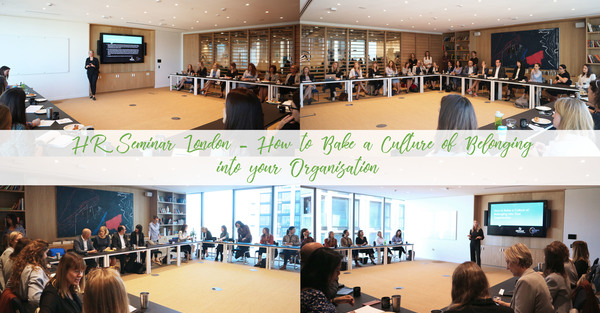Drop off your CV
We serve the global HR community through our offices located in Delhi, Hong Kong, London, New York, São Paulo and Singapore and have placed HR leaders in over 30 countries.
Elliott Scott HR UK held a breakfast seminar in partnership with Sasha Scott, Founder of the...

Elliott Scott HR UK held a breakfast seminar in partnership with Sasha Scott, Founder of the Inclusive Group on the 18th of September exploring ‘How to Bake a Culture of Belonging into your Organisation’.
The session opened with a discussion around how we define ‘belonging’. When we think about belonging, everyone can tap into that sentiment of what it feels like not to belong. We feel we belong when we are able to be our authentic selves. We are increasingly seeing belonging linked to diversity and inclusion (D&I) and participants were asked to think about what belonging means to their culture. Governance has been changing dramatically around cultural misconduct. The 2019 FCA/ FRC UK Corporate Governance Code now also places focus on cultural misconduct and is now experiencing the same level of scrutiny as financial misconduct.
Figures from the FCA have shown that there has been a 220% increase in whistle blowing complaints surrounding non-financial behaviour and UK lawyers have hit a record number of sex misconduct claims following #MeToo. Organisational culture is born from the behaviour of its employees and a toxic culture could be down to toxic people. In order to make an impact on D&I, we need to look at an organisations culture and its behaviours.
It’s important for employees to feel they can speak up and be listened to, therein creating a “listening culture”. This creates the concept of psychological safety, which is needed to create a culture of belonging. Accountability is also key, many participants questioned whose responsibility it should be in an organisation to monitor this, and how important it is to be led from the top. It has to start with the Executive team setting the right culture and right behaviours, but needs to then filter down through all levels.
We also discussed the shift in where the responsibility of D&I sits in a business. We are seeing more COO’s driving a lot of the initiatives with data and close support provided by HR. Creating a culture of inclusion We moved onto discuss and share ideas around how organisations can take steps to become more inclusive.
Hiring:
Because of the human condition we tend to look for people who are like ourselves and this impacts the hiring process where like for like is chosen. We first need to start by educating the current employees, through unconscious bias training for example, teaching them to look at different ways of hiring and making this a part of everyone’s roles, woven into the employee lifecycle. We can also change how we train and assess prospective employees’ i.e. what are their strengths that link to the behaviours we want to see in our culture.
Women:
Ask senior women in the business how they could have been made to feel more included during their careers. Another participator commented that they looked at turnover, where were women leaving, who was hard to bring in and how this then links to and forms their culture.
Differing regions and office set ups:
It was asked how we can bring international businesses together across cultures. We were encouraged to have a global overview but to take a glocal approach with office champions that create movement. In companies with a high volume of temporary workers, they can be united through behaviours. People are united by a common goal and when working in a more agile environment you need to focus on synchronicity.
Tools to measure inclusion Identify behaviour:
The ideal behaviours to create psychological safety in an organisation include: being a listener, empathetic and open minded. Conduct an exercise in your organisation to identify what behaviours block inclusion. Change needs to come from senior leaders through their behaviours.
Accountability:
Find how you can keep Executives in the organisation accountable for the organisations culture. Ensure this is a discussion in the board room and conduct 360’s with multiple team members and levels.
The power of data:
Utilise your internal networks to track relational analytics, looking at the velocity of communications between every employee, team and organisation to measure inclusion. Move from annual to pulse surveys, providing real time data to act on. A participant commented to then give behaviour the time it needs to change as they’ve seen projects thrown out and the next moved onto before they have the opportunity make an impact on the organisation.
Everyone in an organisation has a part to play in creating the right culture, where people feel comfortable to speak up and be listened to. This has to start from the most senior people leading from the top and baking the right culture into their organisations.
If you are creating an impact on the behaviours and culture in your organisation, I would love to hear from you at kh@elliottscotthr.com.
If you would be interested in attending a future HR seminar in London, follow us on LinkedIn and keep an eye on our events page.